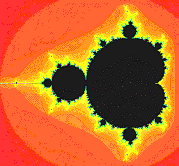Fractals
Koch Curve
In the Koch Curve, we start with a line. Then,
every iteration we draw an equilateral triangle on the middle third of each
existing line. This after the first iteration, we get this figure.
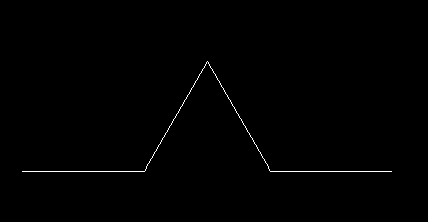
After the second iteration, it looks like this.
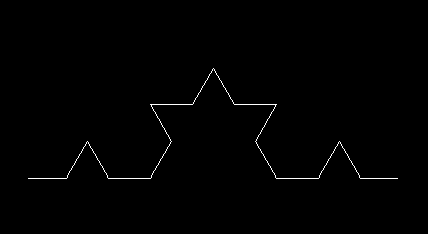
After the third iteration, it looks like this.
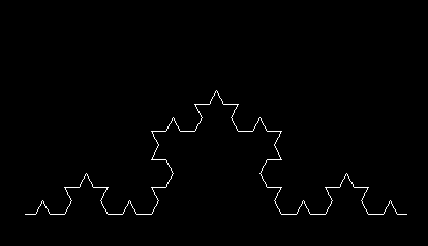
Each iteration gets a more and more detailed picture.
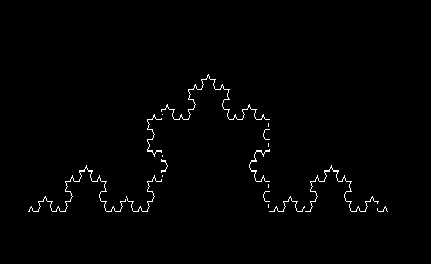
If we iterate the Koch Curve ad infinitum, we get a very curious fact: The area inside the Koch Curve is finite. However, its perimeter is infinite. This may seem counterintuitive, but the area must be finite because we can put a square around it with a fixed side length. Thus the Koch curve has an area less than the square. However, on each iteration, we increase the number of lines, so the lengths of the new lines is always equal to 2/3 of the original length of the line. Thus the perimeter goes to infinity.
Sierpinski Triangle
In the Sierpinski Triangle, we start with the
three vertices of an equilateral triangle, which are numbered 1, 2, and 3. Then
we take the center of the triangle. Then we use a random number generator to
choose the numbered vertices 1, 2, or 3. Then we move ½ the distance from the
place where the point already is (initially at the center) and draw a new point
at the new location halfway to the new vertex. If we iterate this infinitely
many times, we get something amazing. It does not matter what the random
numbers are. We always get the same picture. This is what we get with 100
random numbers.
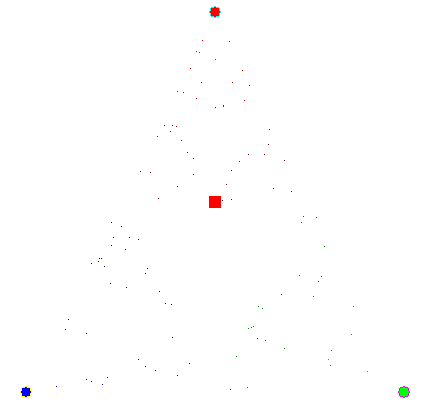
Here, I colored the vertices rather than numbered
them, but the outcome is the same. After 100 tests, it is hard to see what will
happen. Here is after 1000.
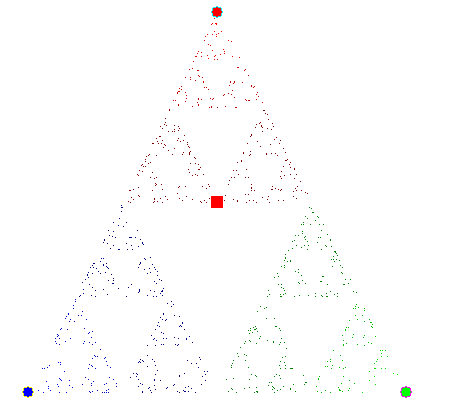
A figure begins to emerge. After 10 000, it is
obvious what will happen.
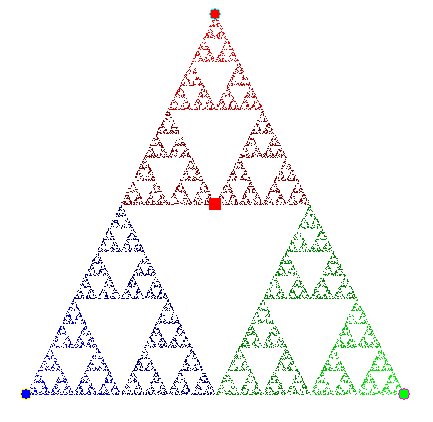
After 100 000, it changes little, but the lines
become less blurry.
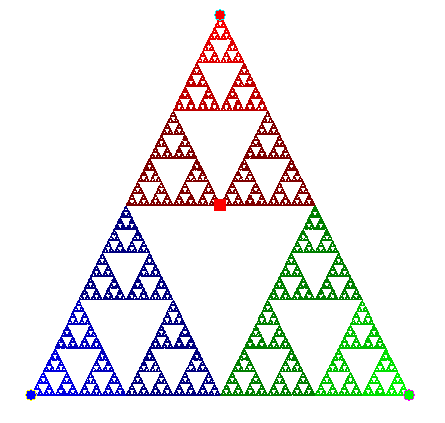
Interestingly, we reach the Sierpinski Triangle if we color the odd numbers in Pascal's Triangle. The even numbers take up the white spaces.
Sierpinski
Carpet
There is no real reason that we must use a triangle for use in the Sierpinski Triangle. In the Sierpinski Carpet, we use a 3 by 3 square with no point in the middle. Then a random point from the eight is selected. However, unlike in the Sierpinski Triangle, in the Sierpinski Carpet, we move only 1/3 the distance to the point chosen rather than ½. The resulting figure, after 100 000 random points is

Mandelbrot Set
This is probably the most famous of all
fractals. In the Mandelbrot Set, we start with the complex plane. Then we
perform an infinite iteration: we perform the transformation ![]() , where c is a constant, and each iteration, x of the new
iteration is the result of the previous iteration. c is a point on the
complex plane that we are evaluating. If after infinitely many iterations the
transformation has not gone to infinity, we say that this point is inside the
Mandelbrot Set. If after infinitely many iterations the transformation has gone
to infinity, we say that this point is not part of the Mandelbrot Set. We color
the points inside the Mandelbrot Set in one color. In my picture they are
black. We then color the divergent points in various colors based on how fast
those points reach very large values. Below is my diagram of the Mandelbrot
Set.
, where c is a constant, and each iteration, x of the new
iteration is the result of the previous iteration. c is a point on the
complex plane that we are evaluating. If after infinitely many iterations the
transformation has not gone to infinity, we say that this point is inside the
Mandelbrot Set. If after infinitely many iterations the transformation has gone
to infinity, we say that this point is not part of the Mandelbrot Set. We color
the points inside the Mandelbrot Set in one color. In my picture they are
black. We then color the divergent points in various colors based on how fast
those points reach very large values. Below is my diagram of the Mandelbrot
Set.
